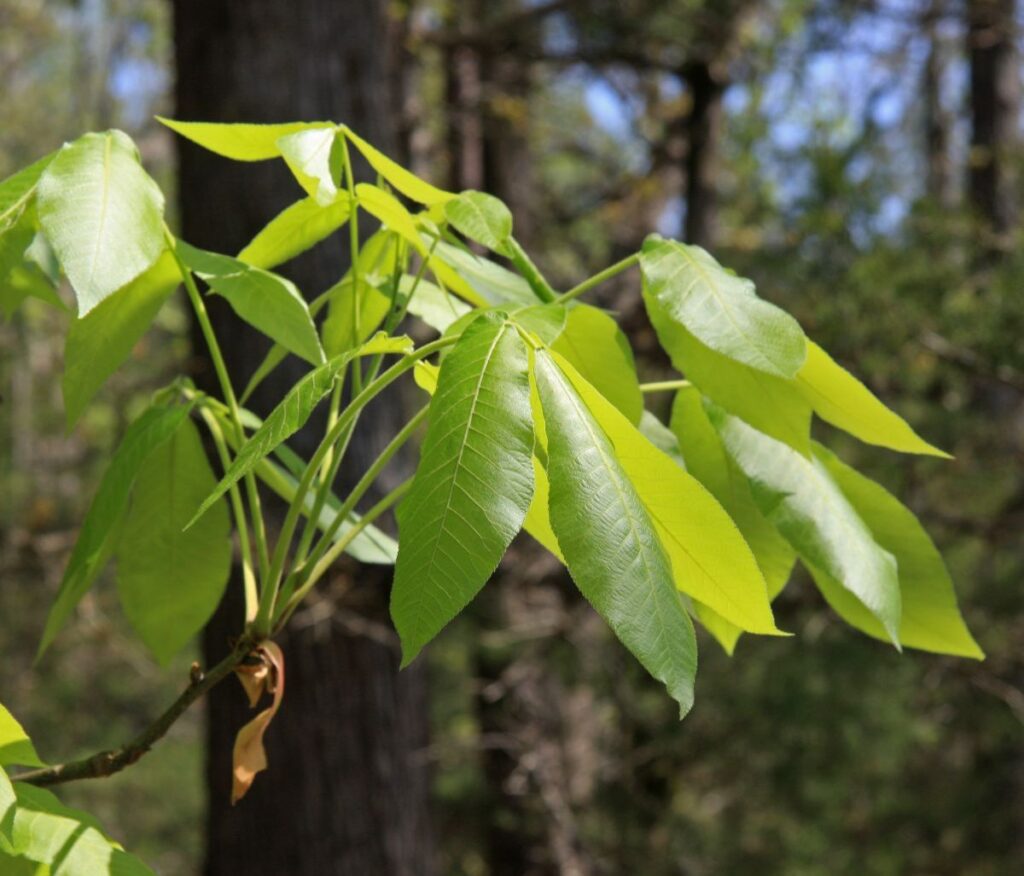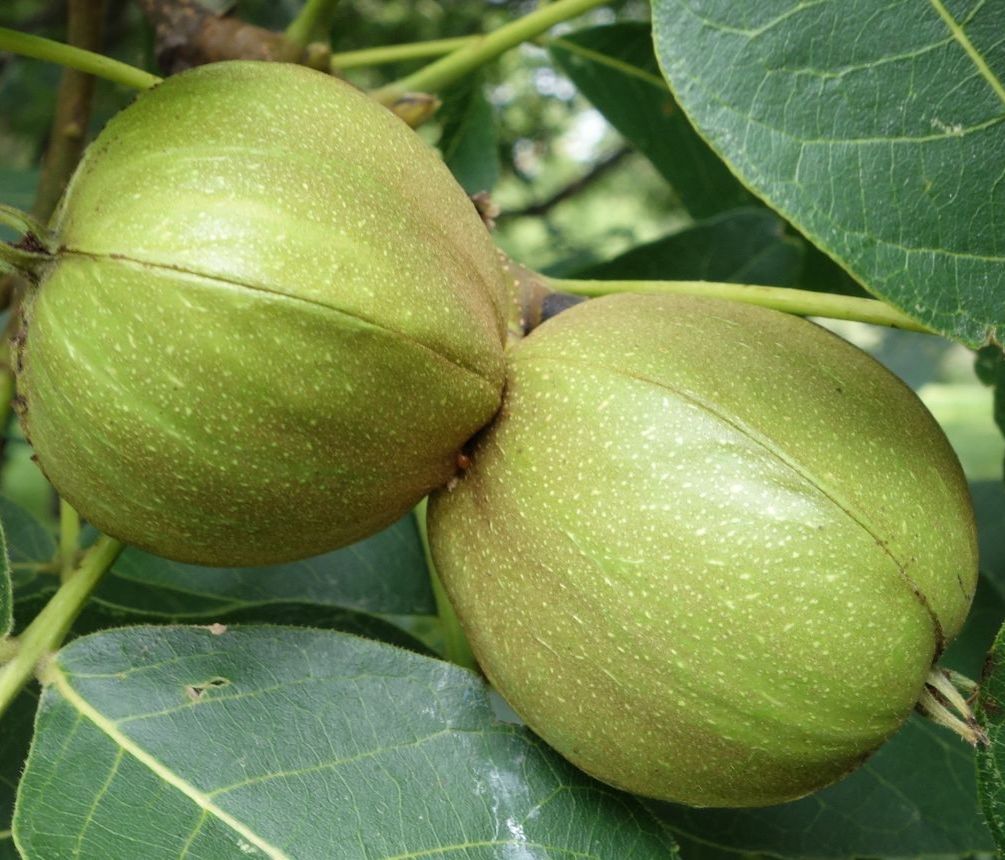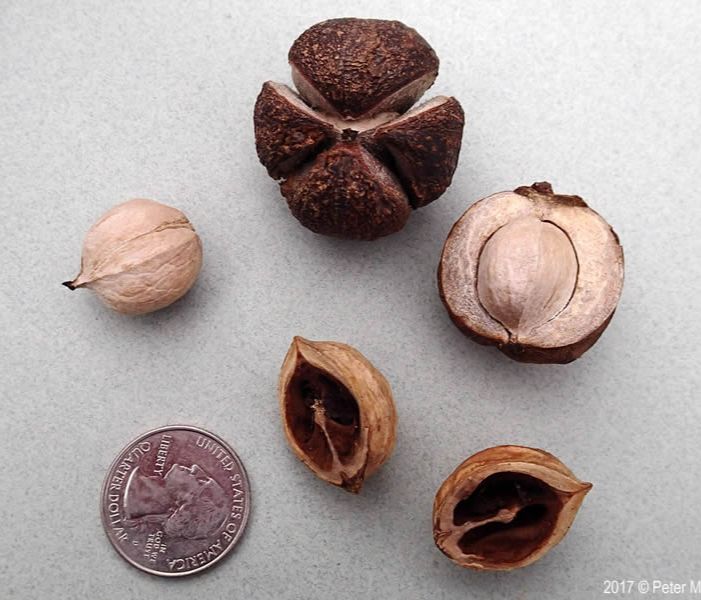NATIVES TO KNOW
Shagbark Hickory, Carya ovata
By Joyce Tuharsky, WORC Member
I once had a neighbor who thought she should remove a tree that looked sickly, because the bark appeared to be falling off in strips. I said I thought that the tree was a Shagbark hickory and looked very healthy. I was correct, the tree was spared—and still stands today!
Shagbark hickory is a native, deciduous tree, that can grow over 100 feet tall, with a straight trunk up to 4 feet in diameter, and an oval crown 50 feet wide. The upper branches are ascending, while the lower branches are descending. As its name implies, this tree has very shaggy bark, but this is found only on mature trees. Young trees (and newer branches) have smooth medium gray bark.
The leaves are compound with 5 leaflets, each leaflet being 3–8 inches long, pointed at the tip with serrated edges. The upper surfaces are medium to dark green; the undersides are paler. The leaves turn a pretty yellow to orange color in fall.
Shagbark hickories have both male and female flowers. The male flowersare borne on catkins, 4-6 inches long, appearing at axils of leaves from the previous season. The female flowers appear on short 1/3-inch-long spikes at the end of young shoots. In late summer, pollinated female flowers ripen into nuts, growing as a single nut or in clusters of three. The nuts are 2–3 inches in diameter, oval, and covered in a green husk. The husk shrinks and peels away as the nut dries after falling from the tree.
Shagbark Hickory trees are very valuable for wildlife, supporting over 180 insects and in turn insect-eating birds. Birds will also eat the catkins and use the tree for cover and nesting sites. The nuts are relished by squirrels, chipmunks, bear, and other mammals.





Shagbark hickory nuts are enjoyed by humans, too! Once a staple for native Americans, the nuts are sweet, high in protein and fiber, similar in taste but milder than black walnuts. But the nuts are difficult to produce commercially. The trees do not start producing nuts until 10 years of age, coming into full production at 40 years. Thereafter, they can produce bumper crops every 1-3 years for 200+ years.
The lumber of Shagbark hickory is prized for its durability and hardness. Over the years, the wood has been used to make items that require strength such as bows, tool handles, ladder rungs, wheel spokes and axles, ploughs, skis, and snowshoes. The wood also makes beautiful flooring and cabinetry with its contrasting colors of light wood and dark designs. Because of its denseness, Shagbark hickory is highly valued as firewood. It is great for smoking meat.
The range of Shagbark hickories is one of the largest of our native hickories, covering much of the continental U.S. east of the Mississippi, except coastal plain areas. Slow growing, the tree prefers full/part sun and slightly acidic, well-drained soils. The root system is extensive and deep, making it hard to transplant even small seedlings. But undisturbed, these trees are resistant to high wind, disease, and drought.
Photos all from Wikipedia Commons:
- Shagbark hickory leaves by Dcrjsr
- Carya ovata female flowers, by William (Ned) Friedman
- Carya ovata immature fruit by William (Ned) Friedman
- Carya ovata mature fruit by Peter Dziuk – https://www.minnesotawildflowers.info/tree/shagbark-hickory
- Shagbark Hickory bark, by Famartin
